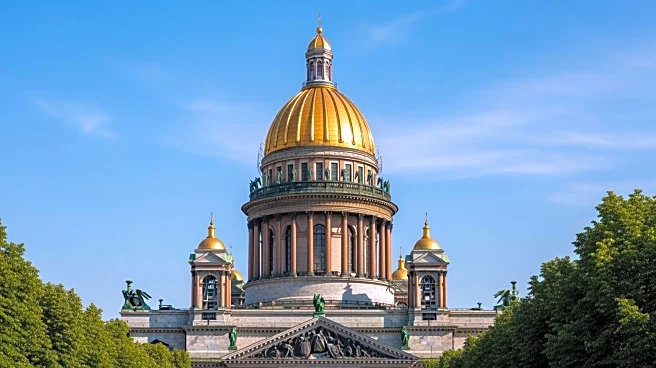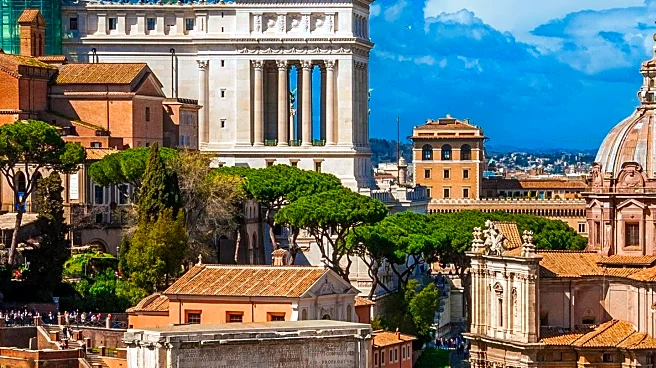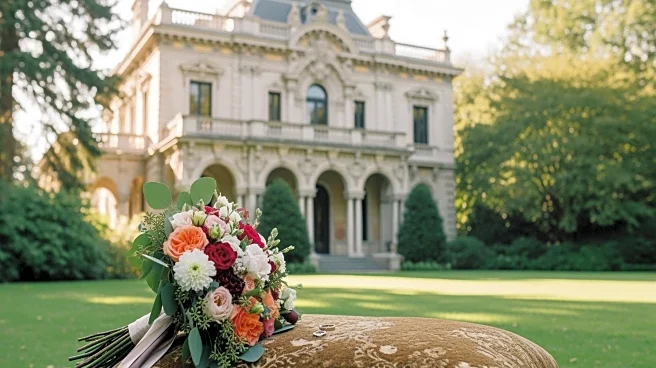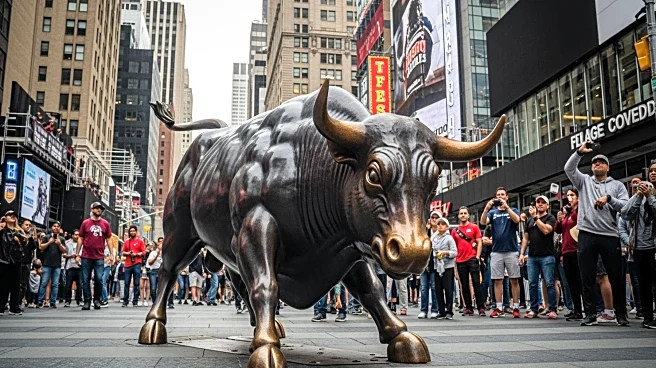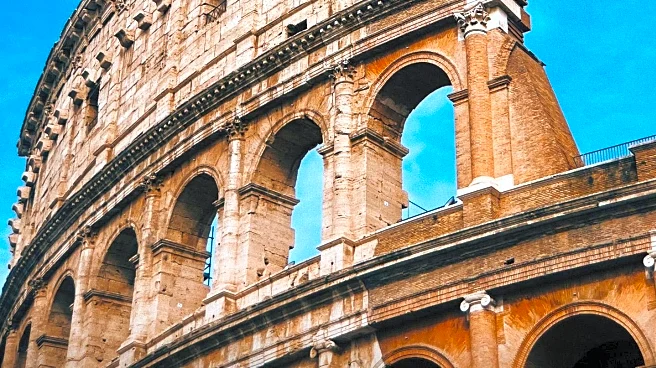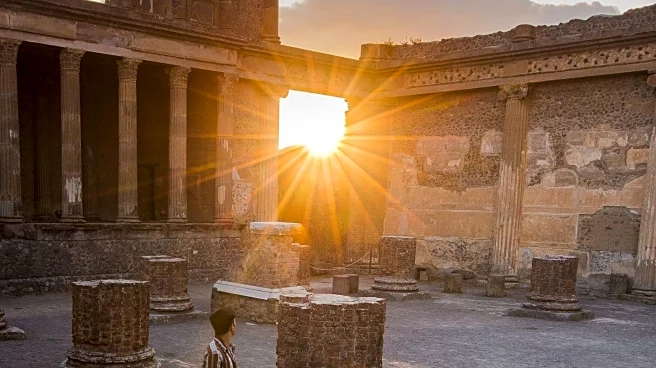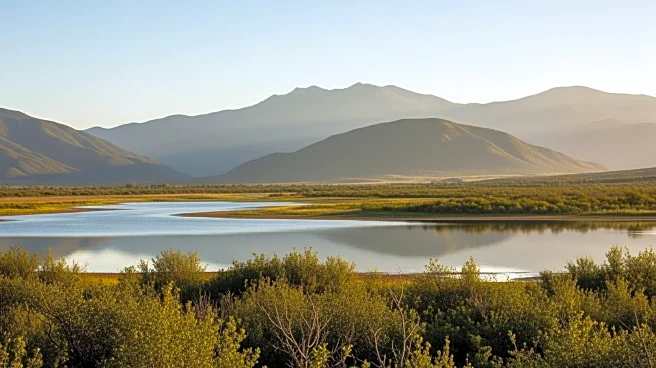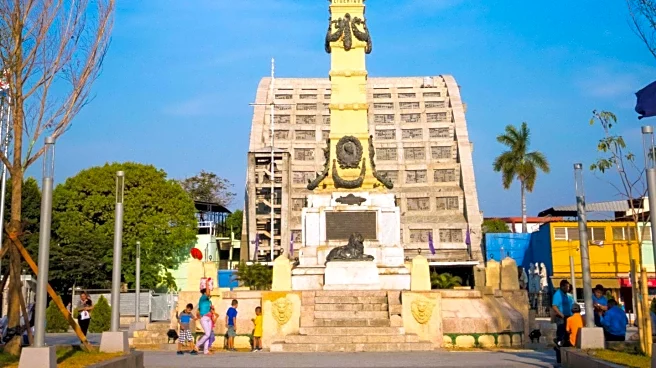What's Happening?
Romania has inaugurated the People’s Salvation Cathedral, the largest Orthodox church in the world, located in Bucharest. The cathedral stands at over 125 meters tall and can accommodate 5,000 worshippers.
The consecration of its religious paintings marks the culmination of a construction project that began in 2010, with the altar consecrated in 2018. The cathedral's interior is adorned with frescoes and mosaics inspired by medieval Romanian and Byzantine art. Despite its religious significance, the project has faced criticism due to its cost, which has reached approximately 270 million euros, primarily funded by public money.
Why It's Important?
The opening of the cathedral is significant for Romania, a country where 85% of the population identifies as religious, and the Romanian Orthodox Church views the cathedral as a symbol of national identity. However, the use of public funds for its construction has sparked debate, with critics arguing that the money could have been better spent on essential services like education and healthcare. The cathedral may boost national pride and serve as a tourist attraction, potentially benefiting the economy in the long term. Nonetheless, the project highlights tensions between religious priorities and public spending in Romania.
What's Next?
The cathedral is expected to become a major tourist attraction, drawing visitors from around the world. This could provide economic benefits to the local community and enhance Romania's cultural profile. However, ongoing public debate about the allocation of funds may influence future government spending decisions, particularly in areas like healthcare and education. The Romanian Orthodox Church may continue to play a significant role in shaping national identity and public policy.
Beyond the Headlines
The cathedral's construction reflects broader cultural and historical dynamics in Romania, where religion has been a cornerstone of national identity despite periods of suppression under communist rule. The project underscores the complex relationship between church and state, raising questions about governance and the prioritization of public resources. As Romania navigates its economic challenges, the cathedral's impact on society and its role in fostering national unity will be closely watched.
